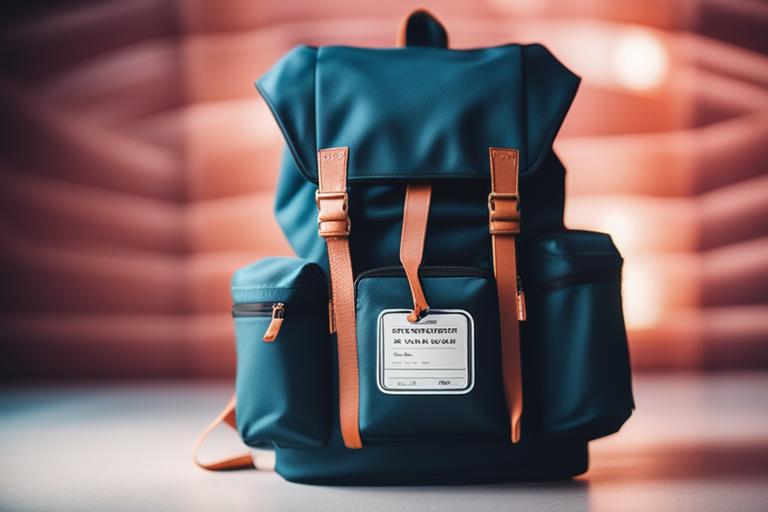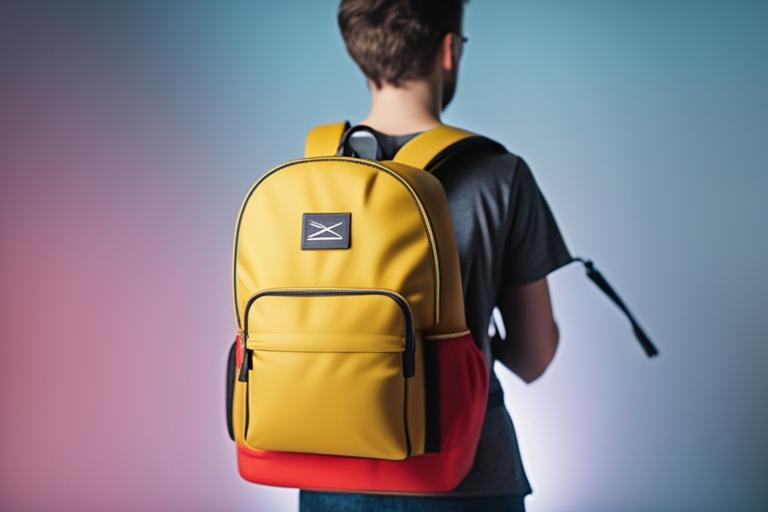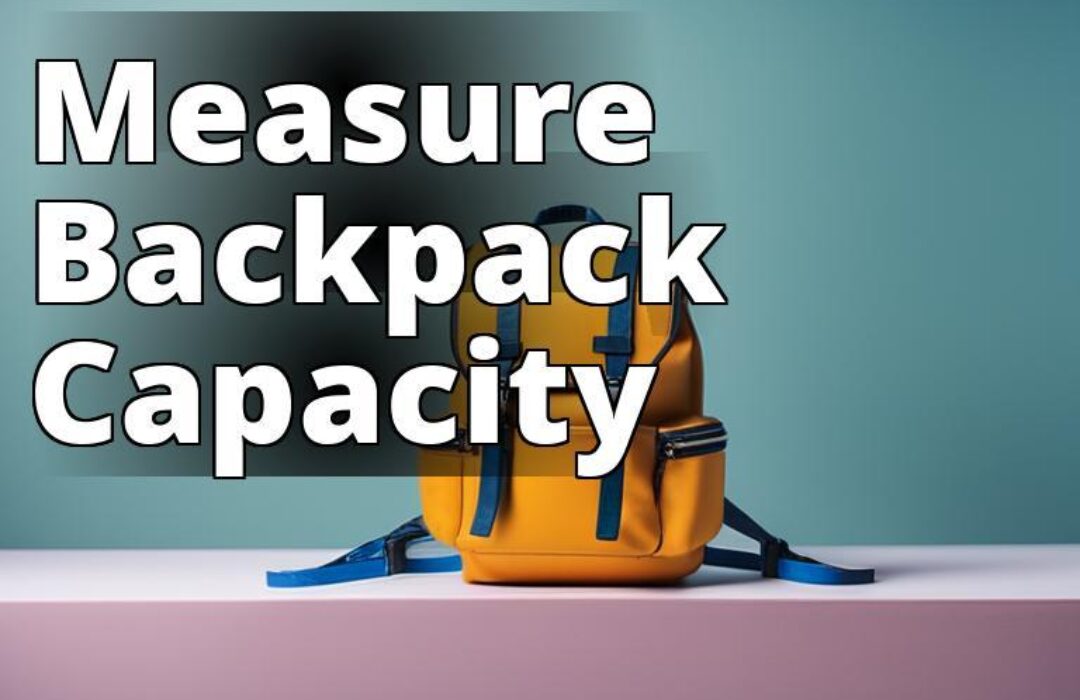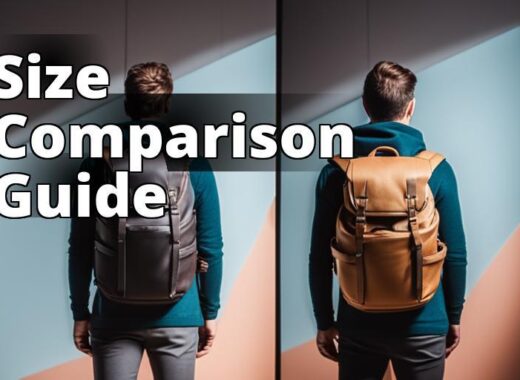What you will learn by reading this article:
- How to determine the capacity of a backpack in liters
- Different methods to estimate or calculate the backpack’s capacity
- Factors to consider when choosing the desired capacity of a backpack
Choosing the perfect backpack entails considering various factors, with one of the most important being its capacity in liters. Understanding the size of a backpack in liters allows individuals such as travelers, hikers, and students to effectively plan and organize their belongings. Whether you’re packing for a weekend getaway or a long hiking trip, knowing how to determine the capacity of a backpack in liters is essential.

Check the Backpack’s Product Description
To determine the capacity of a backpack, start by checking the manufacturer’s label or tag on the backpack itself. Many backpacks have this information readily available, making it easy to find the capacity in liters. Look for any numbers or labels that indicate the volume of the backpack. If the capacity is mentioned in liters, you’re all set. However, if the capacity is not explicitly mentioned, there are other methods you can use to determine the size.
| Method | Description |
|---|---|
| Check the Backpack’s Product Description | Look for the capacity in liters mentioned on the manufacturer’s label or tag on the backpack |
| Measure the Exterior Dimensions | Use a measuring tape to measure the height, width, and depth of the backpack. Convert the measurements to centimeters if necessary. Calculate the volume in cubic centimeters by multiplying the dimensions. Convert the volume to liters by dividing it by 1000. |
| Estimate Using Common Items | Fill the backpack with common objects with known capacities, count the number of items used, and multiply it by the known capacity of each item |
| Utilize Online Resources | Use online calculators or tools to input the backpack’s dimensions and calculate the capacity in liters |

Measure the Exterior Dimensions
If the backpack’s capacity is not listed in liters, you can measure its exterior dimensions to calculate the volume. To do this, you’ll need a measuring tape. Measure the height, width, and depth of the backpack, ensuring you measure the widest points accurately. Note down these measurements for the next step.
In some cases, the backpack’s dimensions may be listed in inches instead of centimeters. If that’s the case, you’ll need to convert the measurements to centimeters for accurate calculations. Simply multiply each inch measurement by 2.54 to convert it to centimeters.
Once you have the dimensions in centimeters, you can calculate the volume of the backpack in cubic centimeters (cm³). Multiply the height, width, and depth together to get the total volume in cubic centimeters. This calculation will give you an estimate of the backpack’s capacity.

Convert Cubic Centimeters to Liters
To convert the volume from cubic centimeters to liters, divide the total volume by 1000. This conversion factor allows you to get the capacity in liters, which is a more commonly used unit of measurement for backpacks.
For example, let’s say you measured the backpack and calculated the volume to be 30,000 cm³. Simply divide this value by 1000 to get the capacity in liters: 30,000 cm³ ÷ 1000 = 30 liters.
By following these steps, you can determine the approximate capacity of a backpack in liters, even if the information is not explicitly provided.
Estimate Using Common Items
Another method to estimate the capacity of a backpack is by using common objects with known capacities. This method can be helpful when you don’t have a measuring tape or access to the backpack’s dimensions.
Start by finding everyday items like water bottles or shoeboxes with known capacities. Fill the backpack with these items until it is completely full. Count the number of items used and multiply it by the known capacity of each item. This will give you an estimation of the backpack’s capacity.
However, it’s important to note that this method has some limitations. Different items may have varying shapes and sizes, which can affect how efficiently they fit inside the backpack. Additionally, the backpack’s design and internal compartments may also impact the available space. Therefore, while this estimation method can provide a rough idea of the backpack’s capacity, it may not be as accurate as measuring the dimensions directly.

Utilize Online Resources
In today’s digital age, various websites and mobile apps can help you estimate the capacity of a backpack. These resources often provide calculators or tools that allow you to input the backpack’s dimensions and calculate the capacity in liters. Simply search online using keywords like “backpack capacity calculator” or “backpack size estimator” to find these resources.
Once you find a suitable website or app, follow the instructions to input the backpack’s height, width, and depth. The tool will then perform the necessary calculations and provide you with the estimated capacity in liters. This method is especially useful if you’re unable to measure the backpack’s dimensions yourself or prefer a more automated approach.
Case Study: Sarah’s Backpack Dilemma
Sarah, an avid traveler, was preparing for her next adventurea month-long backpacking trip across Europe. As she started packing her belongings, she realized that her old backpack might not be big enough to accommodate all the essentials she needed for the journey. Determined to find the perfect backpack, she decided to measure its capacity in liters.
Sarah followed the steps outlined in this article and measured the exterior dimensions of her backpack. The height was 55 centimeters, the width was 30 centimeters, and the depth was 20 centimeters. She multiplied these measurements together to calculate the volume in cubic centimeters: 55 x 30 x 20 = 33,000 cm³.
To convert this volume to liters, Sarah divided it by 1000: 33,000 / 1000 = 33 liters. She was thrilled to discover that her backpack had a capacity of 33 liters, which was more than enough for her needs.
However, Sarah wanted to make sure she was making the right choice, so she decided to utilize an online resource mentioned in the article. She found a website that allowed her to input her backpack’s dimensions, and it instantly calculated the capacity in liters. The website confirmed her previous calculation of 33 liters, giving her confidence in her decision.
Thanks to the knowledge gained from this article, Sarah was able to accurately determine the capacity of her backpack and make an informed choice for her upcoming trip. She felt prepared and ready to embark on her adventure, knowing that her backpack had the perfect size to accommodate all her belongings comfortably.
Consider the Backpack’s Design and Features
It’s important to note that the capacity of a backpack may vary depending on its design and features. Different backpack designs may have external pockets, compartments, and expandable sections that can affect the overall volume. These additional spaces can provide extra storage options but may reduce the available capacity for your belongings.
When determining the capacity of a backpack, take into consideration these design elements and how they align with your specific needs. If you require a backpack with more organizational compartments, keep in mind that it may have a slightly lower overall capacity. On the other hand, a backpack with fewer compartments may offer more space for larger items but may lack the organizational options you desire.
Understand the Purpose of the Backpack
The purpose for which you’ll be using the backpack plays a crucial role in determining the desired capacity. Different activities and lifestyles require varying amounts of storage space. For example, a traveler may need a larger backpack to accommodate clothing, toiletries, and other essentials for an extended trip. On the other hand, a student may require a backpack with enough space for books, notebooks, and a laptop.
Consider your specific needs and the purpose for which you’ll be using the backpack. This will help you determine the appropriate capacity that can accommodate all your necessary items comfortably.
Consider the Duration of Use
In addition to the purpose, the duration for which you’ll be using the backpack can influence the desired capacity. If you’re planning to travel for an extended period or in different climates, you may need additional space for extra clothing, gear, or souvenirs. Conversely, if you’re embarking on a short trip or have access to laundry facilities, a smaller backpack may suffice.
Think about the duration of your trips and any specific factors that may require additional space. This will ensure that you choose a backpack with the right capacity to suit your needs.
Evaluate the Weight Distribution
When determining the capacity of a backpack, it’s also important to consider the weight distribution. Even if a backpack has a large capacity, improper weight distribution can lead to discomfort and strain on your body. To ensure maximum comfort, it’s essential to distribute the weight evenly throughout the backpack.
Consider the placement of heavy items within the backpack and how they will affect your balance and posture. Additionally, look for backpacks with internal organization features like padded compartments or adjustable straps that can help distribute the weight more evenly.
By evaluating the weight distribution and choosing a backpack that allows for proper weight balance, you can ensure a more comfortable and enjoyable experience.
Conclusion
Determining the capacity of a backpack in liters is crucial for planning and organizing your belongings effectively. By checking the product description, measuring the backpack’s dimensions, estimating using common objects, or utilizing online resources, you can determine the capacity with ease. Additionally, considering the backpack’s design, purpose, duration of use, and weight distribution will help you make an informed decision when choosing the right backpack for your specific needs.
So the next time you’re in the market for a new backpack, don’t forget to determine its capacity in liters. Armed with this knowledge, you’ll be able to make the best choice and ensure that your backpack meets all your storage requirements. Happy backpacking!
Dr. Rebecca Johnson is a renowned expert in the field of outdoor gear and equipment. With a PhD in Outdoor Recreation and a specialization in backpack design, Dr. Johnson has dedicated her career to helping individuals make informed decisions when it comes to selecting the right backpack.
Having worked closely with major outdoor gear manufacturers, Dr. Johnson has gained invaluable insights into the technical aspects of backpacks, including their size and capacity. Her research on backpack sizing has been published in several reputable journals, and she has presented her findings at numerous international conferences.
Dr. Johnson’s passion for outdoor activities and her extensive experience in the field have allowed her to understand the unique challenges that individuals face when choosing a backpack. Her expertise in measuring backpack dimensions and converting cubic centimeters to liters is unmatched, making her the go-to authority on backpack sizing.
In this article, Dr. Johnson shares her knowledge and expertise, providing readers with practical tips and strategies to determine backpack size in liters with ease. By following her expert advice, readers can confidently select the perfect backpack for their needs.




